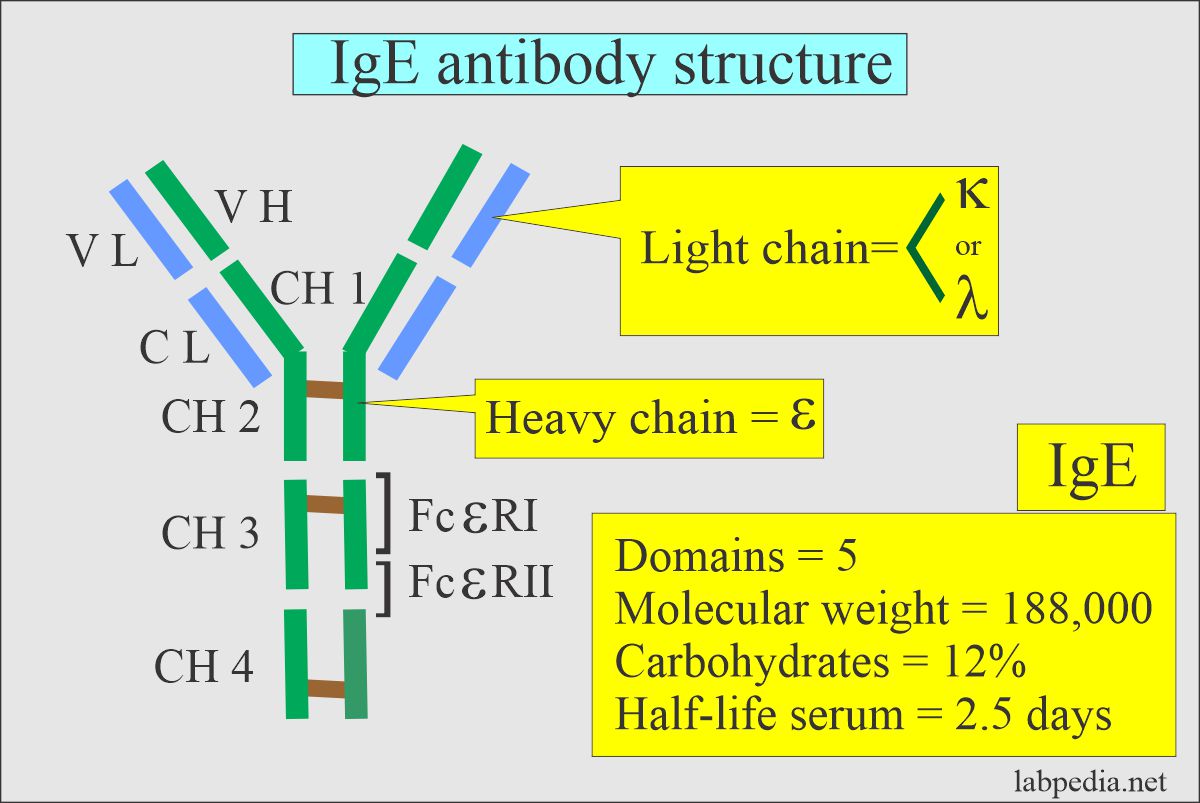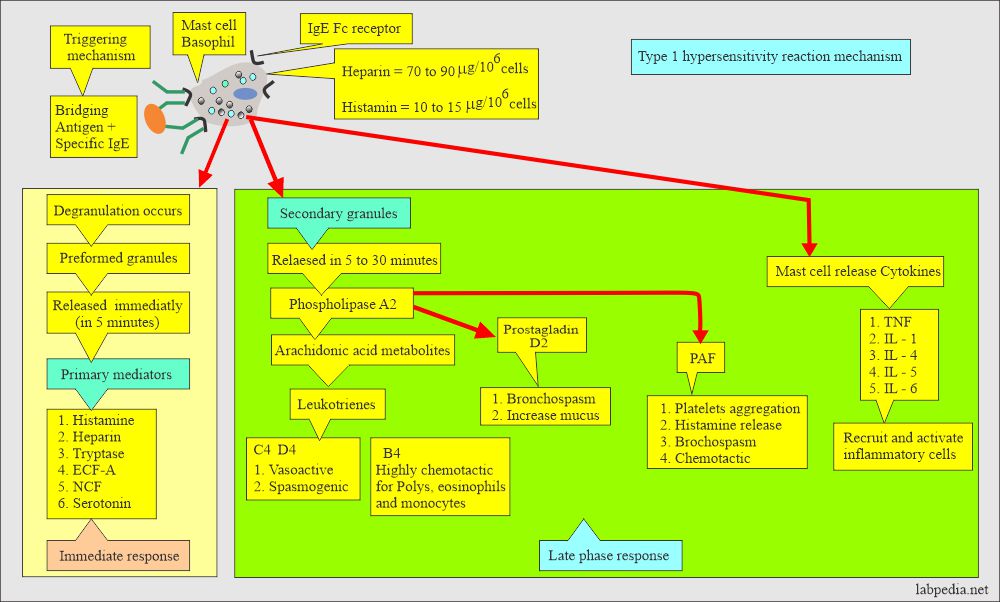Immunoglobulin E (IgE)
Immunoglobulin E (IgE)
What sample is needed for Immunoglobulin E (IgE)?
- The best sample is fresh serum.
What are the indications for Immunoglobulin E (IgE)?
- Used to detect allergic diseases.
- Advised when the patient has:
- Itching of the skin and itching of the eyes.
- Urticaria and hives.
- Asthma and difficulty in breathing.
- Skin diseases like eczema.
- A cough, congestion.
- Sneezing.
- Persistent diarrhea, nausea, and vomiting.
- Diagnosis of IgE-myeloma.
- For the possibility of parasitic diseases.
How will you discuss the structure of the Immunoglobulin E (IgE)?
- IgE is a monomer form with a molecular weight of 190,000 and 7S.
- It has an extra domain in the constant portion.
- It has:
- Two epsilon (ε) heavy chains.
- One pair of kappa (κ) or lambda (λ) chains.
- Its Fc region binds strongly to the receptors on the mast cells, basophils, along with antigens.
What are the facts about Immunoglobulin E (IgE)?
- It is 0.004 % of the total immunoglobulins.
- Its half-life is 2 days.
- It is mainly involved in type-1 hypersensitivity reactions.
- It cannot activate the complement system via the classical pathway.
- It is present in a healthy person’s serum at extremely low concentrations.
- It attaches to the receptors on basophils and mast cells.
- Low-affinity receptors are present on the surface of B-lymphocytes and eosinophils.
- It can not cross the placental barrier.
What is the normal Value of Immunoglobulin E (IgE)?
Source 1
| Age | IU/mL |
| Cord blood | At term ∼1% of the maternal value |
| 0 to 4 days | <1.5 |
| 5 days to 12 months | <15 |
| 1 to 5 year | <60 |
| 6 to 9 year | <90 |
| 10 to 16 year | <200 |
| >16 year | <100 |
| Adult | 3 to 423 |
- To convert into SI unit x 1.0 = kIU/L
Another source
- 150 ng/ml on the topic (non-allergic) person.
- or .002 to 0.2 mg/dl
- Values vary because of the methodology used.
What are the causes of raised Immunoglobulin E (IgE) levels?
- Allergic diseases like asthma and skin diseases.
- Asthma (It is positive in 60% of the patients).
- Parasitic infestation (Ascariasis, visceral larva migrans, hookworm, Echinococcus, and schistosomiasis).
- Multiple myeloma produces monoclonal IgE.
- Hyper IgE syndrome.
- Hay fever (30% of the patients).
- Atopic eczema.
What are the conditions with normal or low IgE levels?
- Sometimes, in asthma.
What are the causes of decreased Immunoglobulin E (IgE)?
- Agammaglobulinemia.
- Hereditary deficiencies.
- Non-IgE myeloma.
- Ataxia-telangiectasia.
Question 1: What type of cells are activated by the IgE antibody.
Question 2: What is the half-life of IgE.



